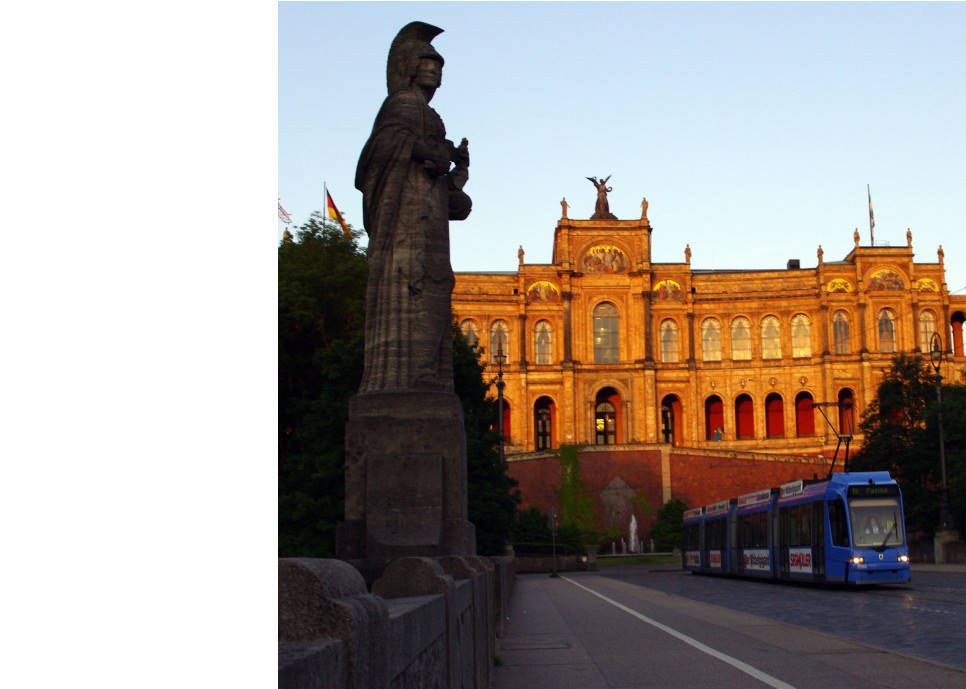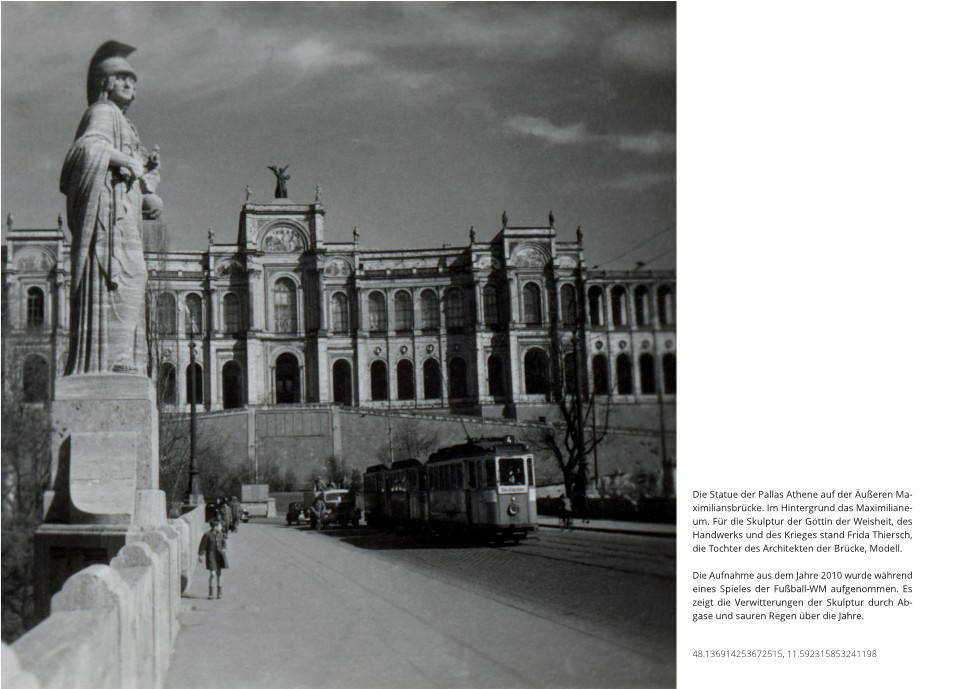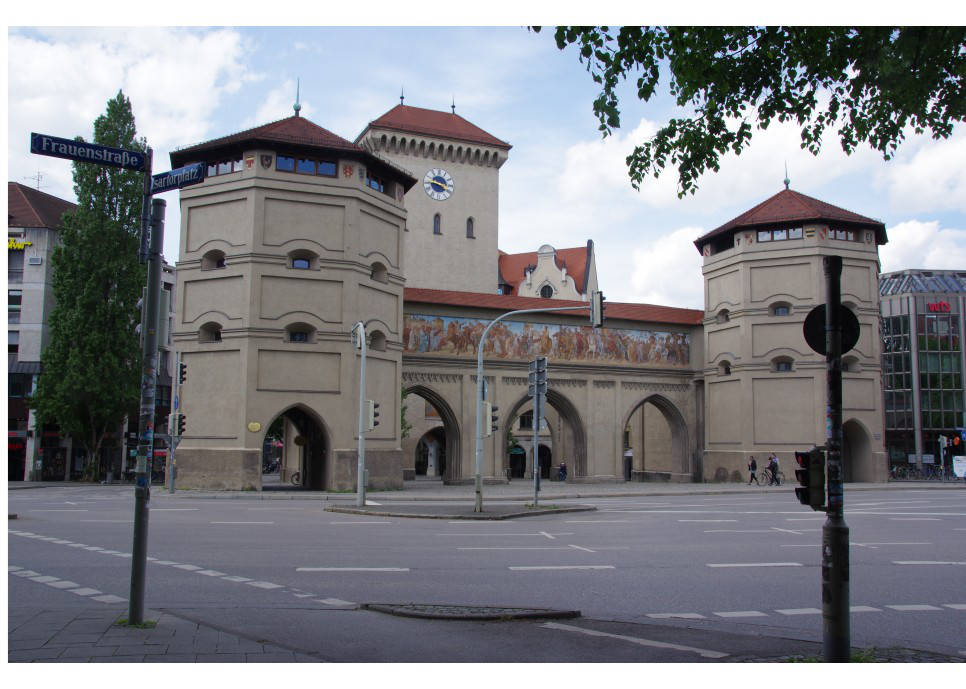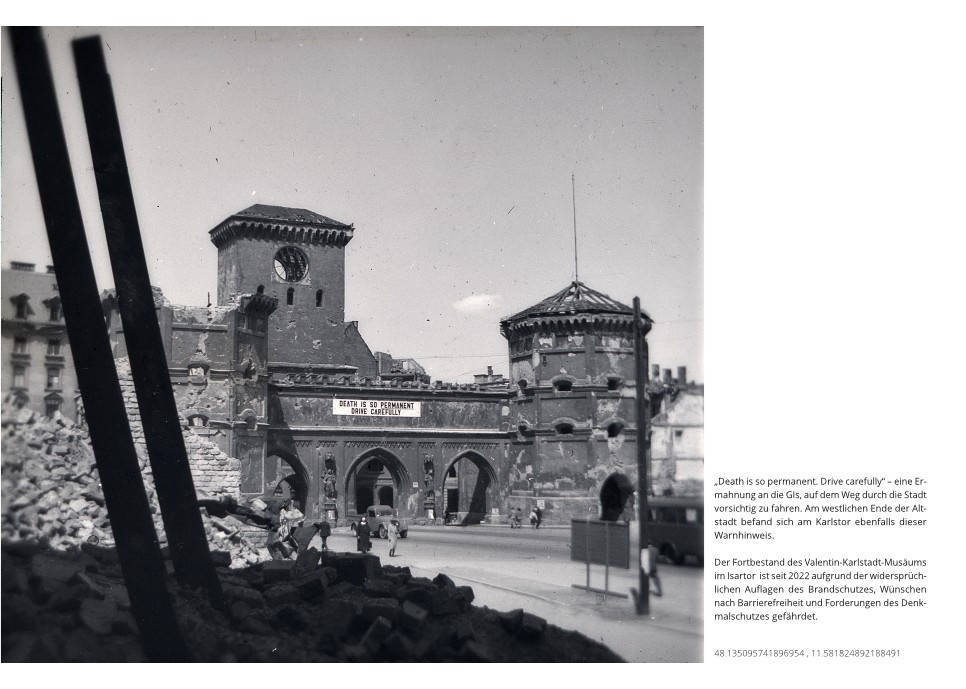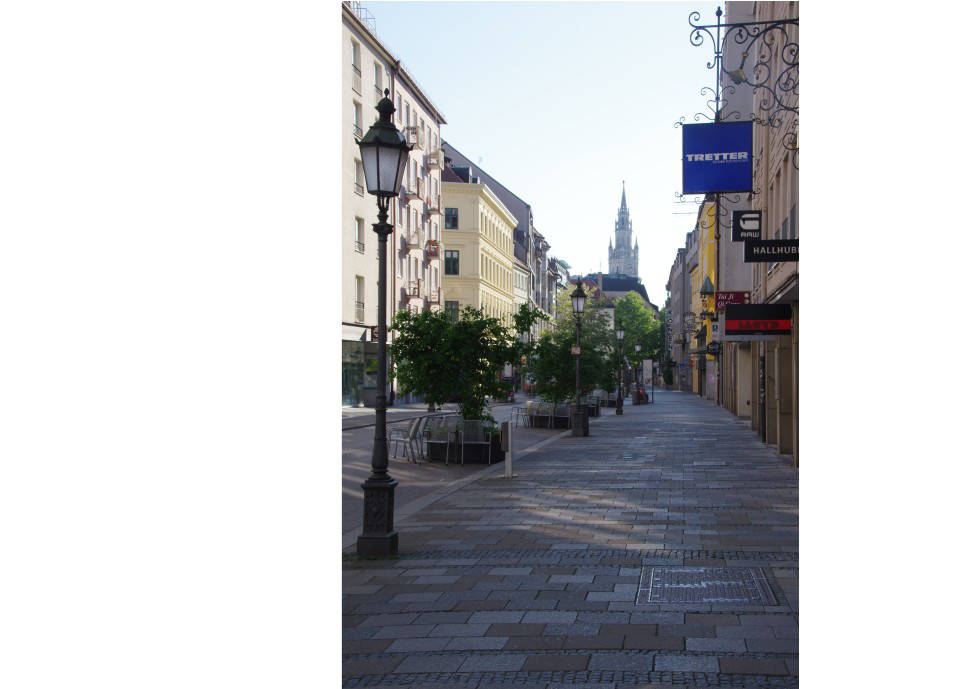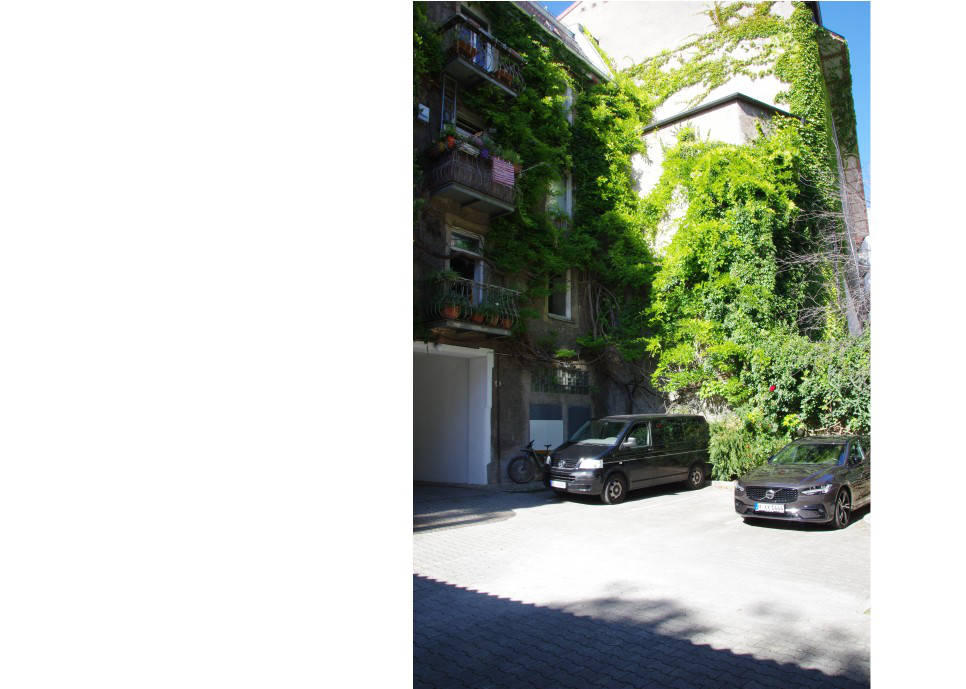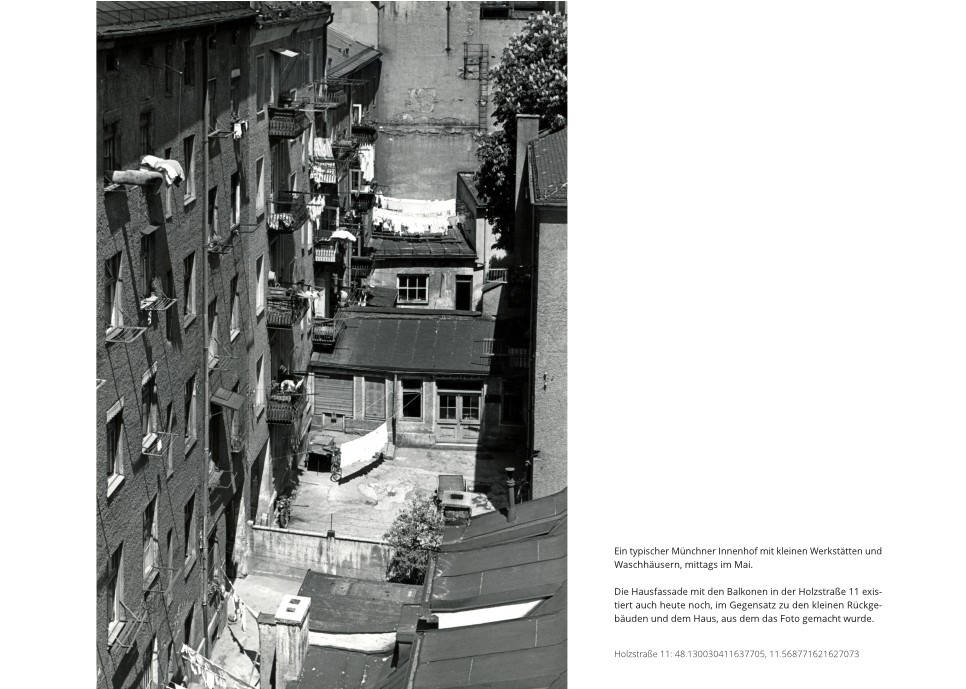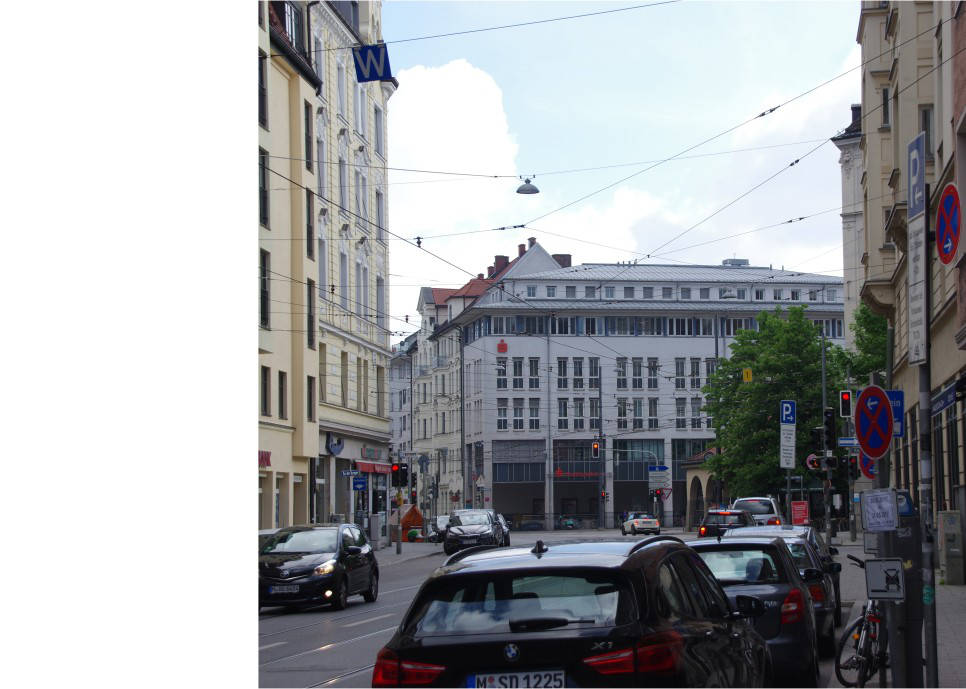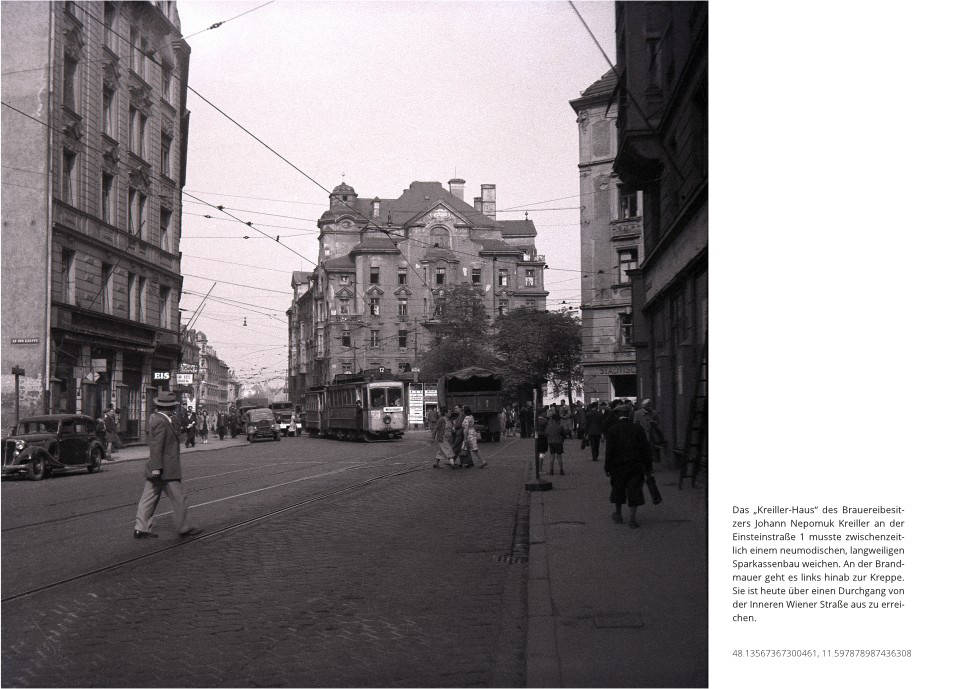Photobook
Spurensuche München
Herbert Wendling and Gerhard Grabsdorf
In recent years, Gerhard Grabsdorf has been searching for places and locations that were so special to his grandfather Herbert Wendling that he captured them in photographs.

The illustrated book Spurensuche München 1930 bis 2023
Cities are subject to constant change. Houses, places and squares change, disappear or remain as they have always been. Due to war destruction and reconstruction, the spirit of the times, the need for new housing, trade and commerce, climate change, greed and many other good and bad reasons.
Gerhard Grabsdorf set out in search of places and locations that had been so special to his grandfather, Herbert Wendling, that he had captured them in photographs.
In this photo book, 58 side-by-side comparisons illustrate the transformation of the city between the 1930s and the 2020s.
Author: Gerhard Grabsdorf
Publisher: Gerhard Grabsdorf Publishing House
Equipment: 120 pages
Dimensions: DIN A4 (29,7 x 21 cm)
Cover material: 235 g chromo cardboard
Material inside: 170 g image print matt
Photographs: Herbert Wendling & Gerhard Grabsdorf
Price: € 25,00
Available: Galerie G. Grabsdorf
Pallas Athena on the Maximilian Bridge
The statue of Pallas Athena on the Outer Maximilian Bridge, with the Maximilianeum in the background. Frida Thiersch, the daughter of the bridge’s architect, served as the model for the sculpture of the goddess of wisdom, craftsmanship, and war.
The photo, taken in 2010 during a World Cup match, shows the weathering of the sculpture over the years caused by exhaust fumes and acid rain.
Hofbräuhaus at the Platzl
By car or tractor to the Hofbräuhaus. In the past, the Platzl was also used as a parking lot for automobiles.
Isartor
“Death is so permanent. Drive carefully” – a warning to the GIs to drive cautiously through the city. At the western end of the old town, near Karlstor, there was also a similar sign.
The continued existence of the Valentin-Karlstadt Museum at the Isartor was at risk in 2022 due to conflicting fire safety regulations, demands for accessibility, and heritage protection requirements. The building is currently undergoing renovation.
Sendlinger Straße
A Ford Taunus Weltkugel 12/15 M and a Borgward Isabella are parked roughly at the level of Sendlinger Straße 23.
In the photo, taken around 1954, the temporary buildings with a Spaten street tavern can still be seen on the left, next to the two multi-story new buildings from the early 1950s. At the back of the building, there was a small beer garden.
Today, Sendlinger Straße is a pedestrian zone.
Munich courtyard
A typical Munich courtyard with small workshops and wash houses, at midday in May.
The house facade with the balconies on Holzstraße still exists today, unlike the small rear buildings and the house from which the photo was taken.
„Kreiller-Haus“
The “Kreiller House” of brewery owner Johann Nepomuk Kreiller at Einsteinstraße 1 was eventually replaced by a modern, rather dull savings bank building.

Herbert Wendling
Herbert Wendling was born in Weinheim an der Bergstraße in 1902. He moved to Munich at the age of twelve when his father took a job as an iron turner in Munich-Moosach. Munich remained his home until his death in 1970, shortly after his second stroke.
His mother died young and his father remarried. Herbert Wendling grew up with four biological siblings and three half-siblings. He fell seriously ill with diabetes at a young age and had to inject insulin several times a day. During his school years, when he attended the Simmernschule in Schwabing, the family lived in Unertlstraße. His parents later moved to Triebstraße in Moosach. It is no longer known whether he also lived there. After leaving school, Herbert Wendling completed a commercial apprenticeship and discovered his passion for photography early on - initially as a hobby.
During the Second World War, he worked for BMW for around five years, initially as an inspector for aircraft engines, and was later taken on as a photographer. This was followed by further employment as a factory photographer at the Hurt company.
Nach Kriegsende fotografierte er ab September 1946 im Rahmen der Kennkartenaktion für das Bayerische Staatsministerium und bereiste zur Anfertigung von Lichtbildern Gemeinden in ganz Bayern. Ohne offizielle Ausbildung zum Fotografen und ohne die Mittel für eine professionelle Kameraausstattung ermöglichte es ihm erst diese Anstellung, sich alle gewünschten Materialien für seine fotografische Arbeit zu leisten. Ende der 40er Jahre wurde ihm von der Handwerkskammer erlaubt, die Berufsbezeichnung „Fotograf “ zu führen. Ab den 1950er Jahren bot Herbert Wendling verschiedene Dienstleistungen rund um die Fotografie an, z. B. kolorierte Semi-Emaille Platten, passend als Einlagen für Broschen, Medaillons oder Krawattennadeln. Auch als Porträtfotograf hatte er ein Einkommen.Die Aufnahmen liegen als als Negative, Dias, Papierabzüge oder auf Film vor. Ein Großteil der Fotos ist zwischenzeitlich digital erfaßt und wird sukzessive aufbereitet und dem Edition/Gallery stock supplied
Through his son-in-law, who was a civilian employee of the US Army, he was able to establish good contacts with the American GIs, who were happy to have their photos taken by him; as a thank you, he received a beautiful ham from one of the Americans - unfortunately, it was covered in sugar crust and inedible for German palates. Herbert Wendling also reproduced old photos of fallen soldiers from the Second World War, often for the memorial plaques of Bavarian communities. He was one of the first to take photographs in colour, soon mainly in numerous schools (class photos).
In addition to his forays through Munich - on foot or by bike - Herbert Wendling often travelled through the countryside with his wife on his motorbike, and later with his Goggomobil. If a particular subject caught his eye, he would stop in the middle of the motorway, pull out his camera and tripod and take a few shots of the landscape. In his private life, he was very interested in stereo photography and even produced a few animated films.

In addition to his forays through Munich - on foot or by bike - Herbert Wendling often travelled through the countryside with his wife on his motorbike, and later with his Goggomobil. If a particular subject caught his eye, he would stop in the middle of the motorway, pull out his camera and tripod and take a few shots of the landscape. In his private life, he was very interested in stereo photography and even produced a few animated films.
Frequent changes of residence during the Second World War took the still young family to Trudering and probably also to Bogenhausen, where one of Herbert Wendling's daughters attended the Gebeleschule on Herkomerplatz for a while. Their last home was at Aßlinger Straße 8 in Ramersdorf.
Over the course of his working life, Herbert Wendling examined many of his photographs only as film in the darkroom, without ever developing them. In addition to the shortage of materials during the war and post-war years, this was also due to his limited financial resources throughout his life. With eleven children, the family led a simple and deprived life. Feeding a family of this size was not easy for a photographer throughout his life.

Over the course of his working life, Herbert Wendling examined many of his photographs only as film in the darkroom, without ever developing them. In addition to the shortage of materials during the war and post-war years, this was also due to his limited financial resources throughout his life. With eleven children, the family led a simple and deprived life. Feeding a family of this size was not easy for a photographer throughout his life.
The city and its streets were one of Herbert Wendling's favourite subjects. On his tours through Munich's neighbourhoods, he photographed a wide variety of buildings, squares, parks and the life that took place there. This resulted in snapshots of the city in the pre-war and post-war periods up to the end of the 1960s. Taken together, they show the fascinating transformation of Munich over the decades. It also becomes clear that the ‘good old days’ often bear this name unjustly: Herbert Wendling's pictures of the Au, for example, show the poorest conditions; the houses appear run-down, their inhabitants do their laundry in the Auermühlbach.

Virtually no information has survived that tells us exactly when the photographs were taken, hardly any information about the exact locations or other helpful notes. If Herbert Wendling noted anything about a picture, it was usually only information about the camera, lens and exposure time. The memories that his photographs evoke in visitors to today's exhibitions are therefore of particular interest. They are often stories about their family and childhood, which older viewers recall with nostalgia, e.g. the unsupervised and free play on the rubble plots after the war; more than just an ‘adventure playground’ for the children and young people of the time, and not just because of the scattered ammunition remnants. Some talk about pubs on the other side of the street where they went to get beer for their father, about the street where their aunt lived, where their first flat was or where they played as children, about the grocer on the corner who always gave away sweets, about their grandfather and uncle who lived and worked in one of the hostels in the Au. Regardless of the age of the observer, however, there is a vague feeling that Munich - despite the frequently documented sparseness of everyday life in the city - has not taken the path to the better in its development. The goal of the car-friendly city from the post-war years and the modern surrender of many aspects of urban planning to investors, including the much-mentioned gentrification associated with it, are painfully perceived and lamented by a majority. Only the extensive construction measures for the 1972 Olympic Games are still viewed favourably.
Source: Illustrated book “München 1930 – 1960”, published in 2020 by Volk Verlag Munich

Herbert Wendling in the Beckpassage on Marienplatz

Gerhard Grabsdorf
Gerhard Grabsdorf was born in 1964 in Munich, where he also lives and works. The photographer Herbert Wendling was his grandfather.
After completing his engineering studies at the Munich University of Applied Sciences in 1994, he started his own business in the fields of new media, multimedia and the Internet. At the same time, he took his first steps in digital art.
As a digitally active artist, participation in various group and solo exhibitions as well as various events, e.g. 6 years Into Somethin‘ among others with Kruder & Dorfmeister at the Muffathalle.
Seit 1996 für unterschiedliche Kunden im Online-Bereich u. a. als freelance web designer and developer active.
After a break, artistic activity was resumed in 2007 with urban photography. Subsequently various exhibitions.
With a focus on Munich, he follows the tradition of his grandfather. However, the subjects differ considerably.
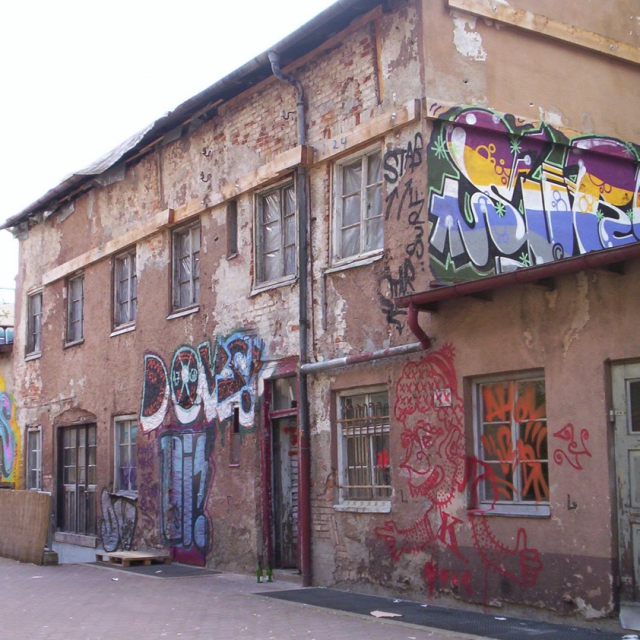
Since 2009, processing the photo archive of the grandfather Herbert Wendling with historical photographs of Munich. Organization and realization of numerous exhibitions with the photographs (e.g. 2011 at the Valentin Karlstadt Museum). Publication of annual calendars and illustrated books „München 1930 – 1960 – Ein Spaziergang durch Stadt und Zeit“ in 2020 and „Spurensuche München“ 2023.
End of 2010 Opening of the Gerhard Grabsdorf Gallery with a focus on kinetic art, historical and contemporary photography and selected national and international artists from various art genres such as sculpture and painting.
co-founder and operator of the LowTech Instruments Museum. This is a temporary museum with art machines by Munich artist Charly-Ann Cobdak. The LowTech Museum has been held five times since 2014.
Vibrierende Stadt
The video "Vibrierende Stadt“ was created in the summer of the year 2008 to 850th city anniversary of Munich.
More videos
Berg am Laim railroad works (2010)
Tracing online 089.city
089.city is / will be a kind of interactive city guide for Munich.
With photographs by Heinz Scherff, Herbert Wendling and Gerhard Grabsdorf from the 1930s to the 2020s
In the first version, the juxtapositions from the book “Spurensuche München” are displayed on an interactive city map, among other things.
With the interactive map, you can determine your own location and go on a voyage of discovery to the places and locations in the immediate vicinity described in the illustrated book and trace the changes over time using the historical and current photos as well as the current situation on site.
089.city: Search for traces